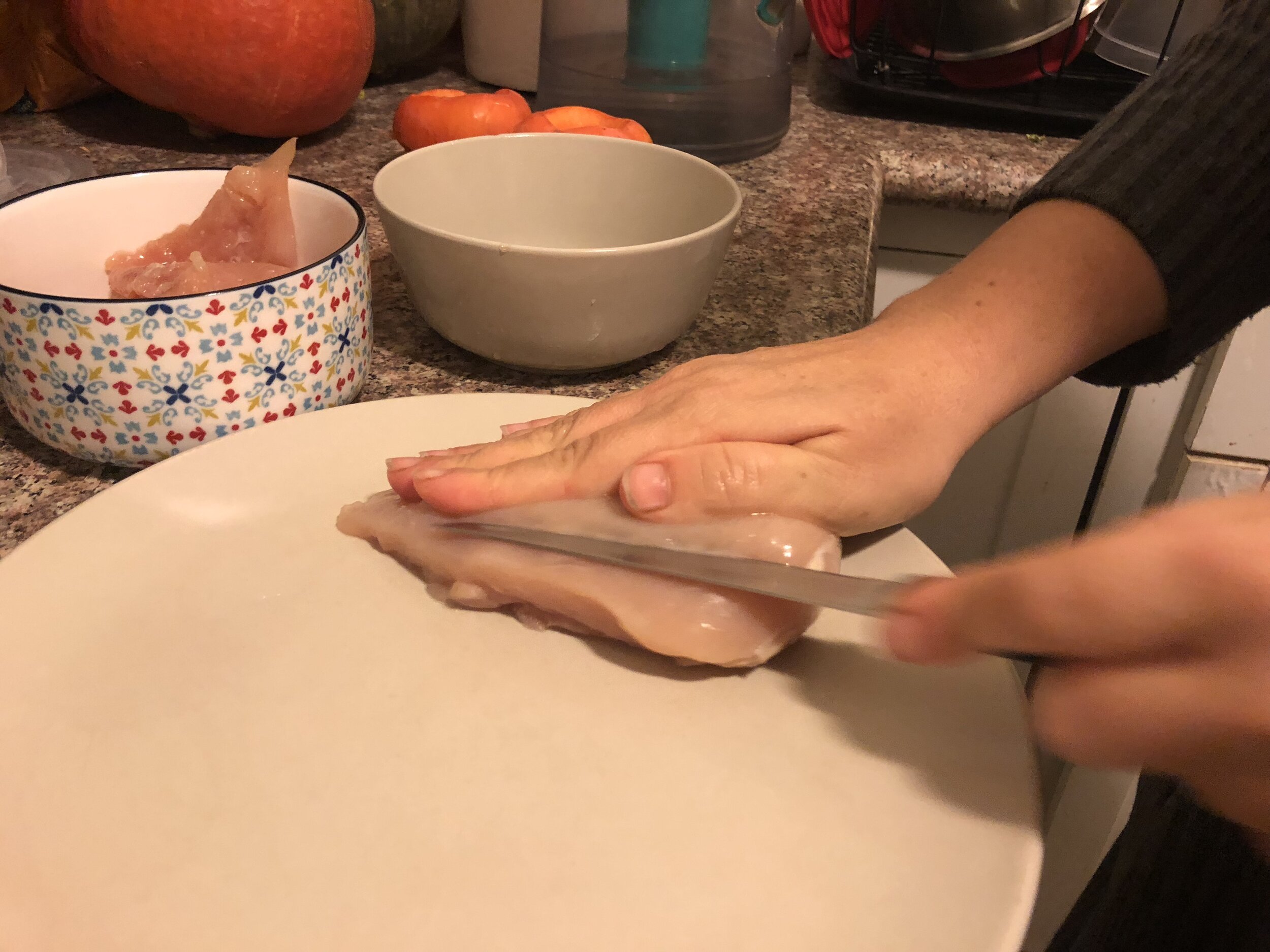Almond Flour Chicken Schnitzel
/ACTIVE PREP TIME: 15 MIN
PASSIVE PREP TIME: 12-15 MIN
Making Healthier Chicken Schnitzel
Chicken schnitzel is a favorite food in Jewish households. It is quick to cook. Kids love eating it. And it is satisfying and filling – especially when you need a quick meal on the table.
When I was a teenager, all the bar mitzvahs I attended served the kids a piece of schnitzel. What kid can pass up the hard crunch of a piece of schnitzel, with that corn flake crumb outer shell?
Unfortunately, schnitzel is not the healthiest food: the corn flake crumbs are high in sugar and empty calories, while the chicken is fried in vegetable oils that are high in inflammatory Omega-6 fatty acids.
There is an alternative.
Why Make Chicken Schnitzel with Almond Flour?
Using almond flour in place of corn flake crumbs, you can easily upgrade from the conventional schnitzel recipe to a healthy and fully nutritious version. This homemade coating is gluten free, paleo and keto-friendly. It is also delicious and much lighter than the conventional coating.
To keep the meat moist and tender, coat the chicken in arrowroot starch in place of cornstarch.
Rather than frying it in oil, it is baked in the oven. By baking instead of frying, you get a much healthier meal while preserving the same delicious flavor.
The mint and dill weed that seasons the breading imparts a delicate and refreshing flavor while infusing the kitchen with an inviting aroma.
Ingredients
2 precut boneless chicken breasts (or schnitzel cuts)
1 egg (beaten)
1 tablespoon arrowroot starch (for Passover, replace with potato starch)
1 cup almond flour
1/2 tsp garlic powder
1/2 tsp dill weed
1/2 tsp dried mint leaves
1/2 tsp sea salt
1 small lemon cut into wedges
How To Make Almond Flour Chicken Schnitzel
Preheat oven to 350°F
Line a baking sheet with unbleached parchment paper and grease with a bit of avocado oil
Prepare the chicken breasts by slicing it lengthwise with a sharp knife
Lightly coat each piece of chicken with arrowroot starch
Dip each piece in the beaten egg, then coat with the almond flour mixture
Place the breaded schnitzel pieces on the baking sheet
Bake at 350°F for 12-15 minutes or until slightly crisp
Remove from the oven and serve with sliced lemon wedges
The Benefits Of Eating Healthy Schnitzel
This is a very quick recipe that can be whipped up on a busy weeknight. The kids can participate too. As an added bonus, make extra and chop it up into bite-sized pieces to throw into the kids’ lunchboxes the next day.






























